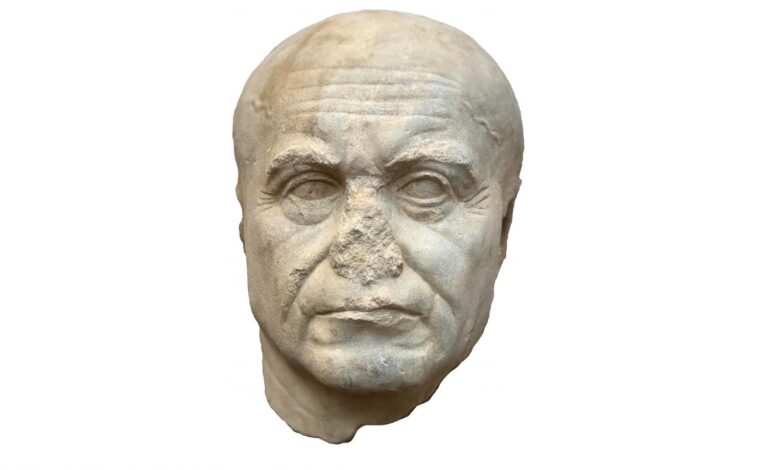
The French archaeological mission from the University of Lyon and the French Institute for Oriental Archaeology in Cairo discovered the head of a marble statue of an elderly man from the Ptolemaic era west of Alexandria.
A statement by the Ministry of Tourism and Antiquities said on Saturday that the discovery came during excavation work in the Taposiris Magna area, 45 kilometers west of Alexandria, in the ruins of a house dating from the seventh century AD.
The Secretary-General of the Supreme Council of Antiquities, Mohamed Ismail Khaled, stated that the size of the discovered statue’s head is huge, reaching the height of about 38 centimeters.
He explained that this indicates that it was part of a huge statue standing in a building of general political importance and not a private house.
The head of the Egyptian Antiquities Sector at the Supreme Council of Antiquities, Mohamed Abdel-Badie, said that the discovered head was carved with high artistic precision and had realistic features, reflecting the spread of artistic realism that flourished at the end of the Hellenistic era.
The initial studies of the features of the head showed that it was of an elderly man, with a shaved head, a face full of wrinkles, a stern expression, and signs of illness.
Abdel-Badie added that the studies indicate the statue was of a prominent public figure and not a king, which indicates the importance of the site of Taposiris Magna from Ptolemy IV onwards.
The head of the mission, Joachim le Bomin, said that the mission is continuing its work at the site in an attempt to find out why this head was found in this house, even though its history dates back to a period before the house was built by about 700 years.
He added that the mission is currently conducting further studies on the head in an attempt to identify its owner, as well as starting the necessary maintenance and restoration work.
The site of Taposiris Magna is one of the most important archaeological sites on the northern coast of Egypt due to its great sanctity in the Greco-Roman and Byzantine eras.
The site contains a huge temple dedicated to the worship of the god Osiris, from whose name the city’s name, Taposiris Magna, comes. This is the Greek name by which the city was named, and it is derived from the ancient Egyptian word Per-Ausar, meaning the house of Osiris.
Edited translation from Al-Masry Al-Youm




